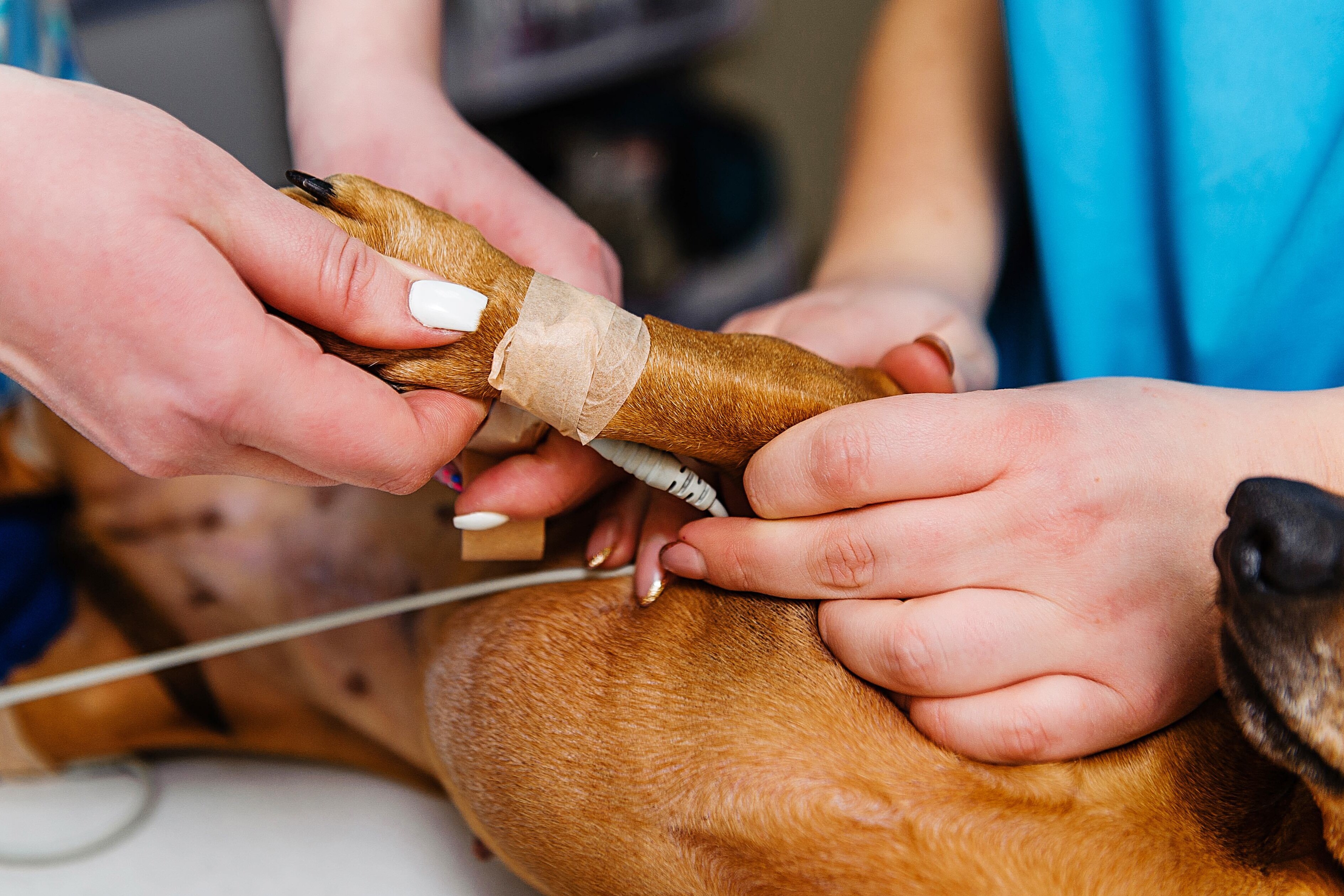Surgical Services

We offer full-service veterinary care at Qi Veterinary Clinic, including an array of soft tissue surgery. Dr. Heilman has been in practice for 25 years and is skilled at performing an array of surgeries. Our goal is to minimize surgeries necessitated by years of chronic inflammation. But we recognize that surgery is necessary to sterilize young patients, and increasingly in older patients, to remove tumors that may arise.
We perform the following surgical procedures:
Sterilization:
- Spay (both ovariohysterectomy and hysterectomy)
- Neuter
Oral surgery:
- Oral tumor removal
- Repair of fractured jaws
- Dental surgery
Eye surgery:
- Eyelid resection (entropion correction) and tumor/mass removal
- Minor corneal procedures
- Enucleation surgery (removal of a diseased eyeball)
Aural surgery:
- Ear hematomas
- Ear canal resections
Gastrointestinal surgery:
- Foreign body removal
- Bowel resection
- Liver lobectomy
- Biopsy of diseased bowel
- Anal gland tumors removal
Oncological surgery:
- Removal of skin tumors or tumors within the body
- Staging of cancers (e.g.) to plan treatment
Orthopedic Surgery:
- Repair of uncomplicated, long bone fractures
- Extracapsular fixation of cranial cruciate rupture in small & medium breed dogs
- Correction of luxating patella in small and medium- sized dogs
- Limb amputation
We refer more complicated orthopedic procedures to more experienced surgeons, such as cranial cruciate ligament surgery in larger breed dogs, complicated fracture repair, and, rarely, spinal surgery.

Prep & Recovery Monitoring
Our two senior technicians, Karena and Chris, have two decades of experience caring for patients perioperatively. They're skilled in:
- Aseptically preparing patients for surgical procedures
- Administering state-of-the-art anesthetic agents (Propofol) and inhalant gas (Sevoflurane)
- Administering local anesthetics and intravenous pain management meds to reduce pain
- Monitoring blood pressure, oxygen, and carbon dioxide levels in the patient
- Attending post-operative care, laser therapy, temperature control, pain relief, etc.
Your beloved animal companion is in good hands with our caring technicians who have dedicated their professional lives to the proper care of our patients; in short, we treat them like family because we know how special each individual creature is.
Sterilization
We spay female patients and neuter male patients. For female cats, we recommend spaying at six months of age to avoid their first heat cycle. Cats may experience their first heat cycle at an even younger age of 4 months. Still, we feel a six-month-old cat is a better candidate for general anesthesia.
Cats usually go into estrus between February through October and may cycle every 2-3 weeks. The yowling during these heats is eerie and troublesome, so spaying a cat before this time is advised.
Male cats will often develop marking behavior if neutered too late. Yet it is beneficial to wait until they are fully grown before neutering, if possible, to allow their urinary tract time to develop fully under the influence of testosterone. Sometimes a male cat will begin spraying urine on walls if left unneutered. This marking behavior may be largely corrected by neutering.
Dogs are a different story. Large dogs develop fewer orthopedic problems if they fully mature under the influence of their sex hormones. Long bone growth plates close at roughly 11 months of age. So it’s best to delay a spay procedure in a female dog until 12 months, before their second heat cycle, but after their growth plates have closed.
If a female dog goes through two or more estrus cycles, her risk of mammary gland cancer rises. We recommend spaying female dogs at one year of age, if possible.
Similarly, large male dogs develop under the influence of testosterone. Their growth plates close by 11 months, but full musculoskeletal development doesn’t occur until 18 months.
Unless a male dog develops any undesirable behavior from testosterone, such as straying, marking, fighting, domineering, or mating, it’s best to wait until 18 months. But mostly, we want to wait until the 12-month mark, at least, if possible.
In smaller dogs, there’s much less risk of orthopedic disease. Still, it’s best to wait until 12 and 18 months, respectively, for female and male dogs.
A Holistic Approach to Pet Healthcare
Become a New Client.